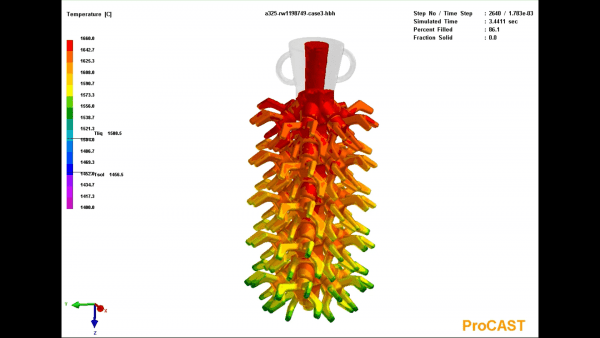What to Understand About Gating System Design for Investment Casting
A major process for investment casting involves pouring the molten metal into the ceramic mold. The molten metal must fill every corner and point of the mold evenly and fully to create a near accurate part. Unfortunately, this process may lead to difficulties depending on the complexity of the part. If the metal cannot reach every point, corner, or isolated section before solidifying, this problem leads to surface defects, porosity, and scrapped parts.
To ensure the proper delivery of metal throughout the ceramic mold, a gating system is designed for optimal molten metal delivery. This gating system directs the flow of metal to the sections of the part while controlling the amount of metal feed into the mold. By carefully controlling the direction and the molten metal’s delivery rate, the gating system design prevents premature solidification as well as turbulence.
Gating System Design
Manufacturers consider the design for both the wax pattern and the gating system during the same investment casting stage. The gating system is made from the same wax material as the wax pattern and will be dewaxed (vaporized) after the ceramic slurry hardens to create the mold. The gating system design consists of several elements: the gates, the feeders, and the runners.
Runners
Along the mold will be a pouring cup where the molten metal is poured into to enter the mold’s cavities. Beneath the cup are the runners. The runner system helps to guide the metal to specific areas so that the mold cavity can fill up evenly. Some ceramic molds are designed to allow for several similar parts to be created during one pouring session. The runners ensure that the molten metal reaches each part mold at the same rate.
Feeders
A feeder system has many of the same functions as a sprue and riser system that is used for sand casting processes. The feeder holds extra molten metal during the pour process. After the molten metal fills the mold and begins the cool, shrinkage and contraction may occur to leave voids. The extra molten metal in the feeder will fill the voids in the ceramic mold after this shrinkage to ensure the cavity is entirely filled.
Gates
The gates are the openings between the runners and the part’s mold cavity. It allows the molten metal to pass inside to fill every crevice and point in the creation of the part. To ensure the metal reaches every area of the mold, manufacturers may design multiple gates, called ingrates, along the mold while deciding on the size, type, and location of each gate.
After the Pour
Once the manufacturer finishes pouring the molten metal into the gating system, the part cools so that the metal can solidify. Then workers remove the gating system, and the part may undergo secondary machining and finishing stages. For some investment casting projects, workers may grind the gating system down to size.
Gating system design is a crucial factor in the investment casting process to allow the molten metal to fill the ceramic mold. For more information about this process, contact Impro.